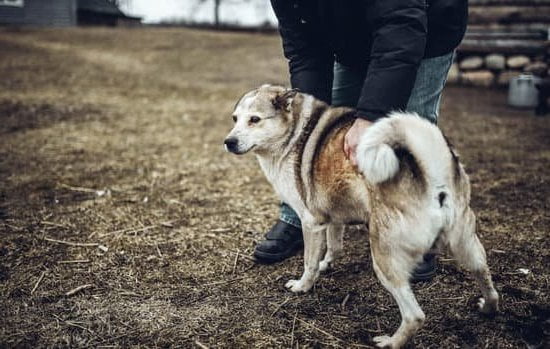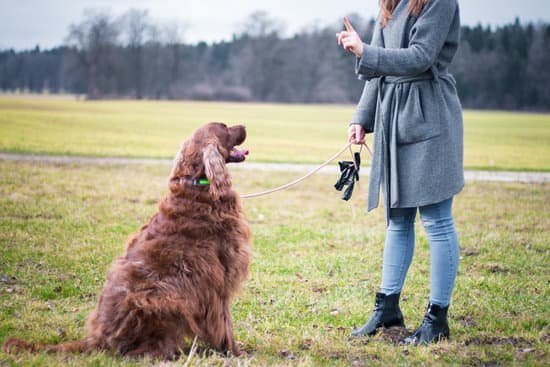Separation anxiety in dogs can be a distressing experience for both the pet and their owners. Understanding how to train your dog out of separation anxiety is crucial in helping them cope with being alone. Dogs are social animals, and when they become overly reliant on their owners, it can lead to destructive behaviors and excessive vocalization when left alone.
Signs of separation anxiety may include destructive chewing, excessive barking or howling, pacing, drooling, and even attempts to escape. It’s essential for pet owners to recognize these signs early on to address the issue effectively. Separation anxiety can stem from various causes such as a sudden change in routine, traumatic experiences, or lack of proper training and socialization.
Addressing separation anxiety is important not just for the well-being of your furry friend but also for maintaining a harmonious relationship with your pet. Training techniques such as desensitization, counter-conditioning, and providing engaging toys can help ease your dog’s anxiety when left alone. Creating a safe environment with comfortable bedding and familiar scents can also contribute to alleviating their stress during periods of separation.
Signs and Symptoms of Separation Anxiety in Dogs
Separation anxiety in dogs can manifest in various signs and symptoms that pet owners should be aware of. One common indicator is excessive barking, whining, or howling when the owner is preparing to leave or has already left the house.
Dogs with separation anxiety may also engage in destructive behaviors such as chewing on furniture, doors, or windows in an attempt to escape and reunite with their owner. In some cases, dogs may exhibit inappropriate elimination inside the house despite being house-trained.
Another sign of separation anxiety in dogs is excessive drooling or panting while their owner is away. Some dogs may also pace back and forth, show restlessness, or display signs of depression when left alone. It’s essential for pet owners to recognize these behavioral changes and understand that they stem from the anxiety and stress of being separated from their human companions.
To address separation anxiety in dogs, it’s crucial to use proper training techniques and create a supportive environment for your furry friend. By implementing positive reinforcement methods, establishing a routine, and seeking professional help when needed, pet owners can help alleviate their dog’s distress and promote a sense of security and calmness even when they are not around.
| Signs of Separation Anxiety | Symptoms of Separation Anxiety |
|---|---|
| Excessive barking, whining, or howling | Destructive behaviors like chewing |
| Excessive drooling or panting | Pacing, restlessness, or depression |
Causes of Separation Anxiety in Dogs
Genetics and Breed
Certain breeds, such as Labradors, German Shepherds, and Cocker Spaniels, are more prone to separation anxiety due to their genetic makeup. These breeds tend to form strong bonds with their owners and can experience heightened levels of distress when left alone. It is important to consider the breed tendencies when addressing separation anxiety in dogs.
Past Trauma or Neglect
Dogs that have experienced past trauma or neglect may develop separation anxiety as a result of feeling insecure or fearful when separated from their owners. Rescue dogs or those with unknown histories may be particularly vulnerable to this type of anxiety. Understanding your dog’s past experiences can help in addressing and managing separation anxiety effectively.
Lack of Proper Socialization
Proper socialization plays a crucial role in a dog’s ability to cope with being alone. Dogs that have not been adequately socialized from a young age may struggle with separation anxiety due to insecurities or unfamiliarity with being by themselves. By providing opportunities for positive social interactions and exposure to different environments, you can help your dog build confidence and resilience against separation anxiety.
Importance of Addressing Separation Anxiety in Dogs
Separation anxiety in dogs can lead to destructive behaviors, excessive barking, and distress for both the dog and the owner. Ignoring or neglecting this issue can worsen over time and may impact the overall well-being of your furry friend. Therefore, it is crucial to address separation anxiety in dogs promptly to improve their quality of life and strengthen the bond between you and your pet.
Negative Effects of Untreated Separation Anxiety
When left unaddressed, separation anxiety can have detrimental effects on a dog’s mental health and behavior. Dogs with severe separation anxiety may exhibit behaviors such as excessive drooling, pacing, self-injury, or even attempts to escape from confinement.
These behaviors not only suggest distress but can also pose risks to the dog’s safety and well-being. Moreover, long-term untreated separation anxiety can lead to chronic stress, which may weaken the immune system and contribute to other health issues.
Impact on Owner-Dog Relationship
In addition to the negative effects on the dog’s well-being, untreated separation anxiety can strain the relationship between the owner and the pet. Constant worry about coming home to a mess or neighbors complaining about incessant barking can create stress and frustration for pet owners.
This can lead to feelings of guilt or resentment towards the dog, impacting the quality of their interactions. Addressing separation anxiety not only benefits the dog but also promotes a healthier and happier relationship between you and your furry companion.
By recognizing the importance of addressing separation anxiety in dogs, pet owners can take proactive steps to help their beloved pets overcome this challenging issue. Through patience, consistency, and appropriate training techniques, it is possible to guide your dog towards a more calm and relaxed state even when left alone.
Training Techniques to Help Ease Separation Anxiety
Separation anxiety in dogs can be a challenging issue to address, but with the right training techniques, it is possible to help ease your furry friend’s distress when you leave. One effective method on how to train dog out of separation anxiety is desensitization.
This involves gradually acclimating your dog to being alone by starting with short periods of time and slowly increasing the duration as they become more comfortable. You can practice this by leaving your dog alone in a separate room for short intervals and then rewarding them for good behavior.
Another useful technique is counter-conditioning, which involves changing your dog’s negative association with being alone to a positive one. You can do this by providing your dog with special treats or toys that they only get when you are away.
This will help create a positive association with being alone and can reduce their anxiety over time. It is essential to ensure that the treats or toys are engaging enough to keep your dog occupied and distracted while you are away.
Consistency is key when implementing these training techniques. It is crucial to follow a consistent routine when practicing desensitization and counter-conditioning with your dog. Make sure to start slow, be patient, and gradually increase the time spent apart.
Remember that every dog is different, so it may take some time to find the right approach that works best for your furry companion. In addition, seek guidance from a professional trainer if needed, especially if your dog’s separation anxiety is severe and requires extra support.
| Training Techniques | Details |
|---|---|
| Desensitization | Gradually acclimate dog to being alone by increasing duration over time. |
| Counter-Conditioning | Change negative association with being alone to a positive one through special treats or toys. |
| Consistency | Follow a consistent routine, start slow, be patient, and seek professional help if needed. |
Creating a Safe and Comfortable Environment for Your Dog
Separation anxiety in dogs can be a distressing experience, both for the pet and their owner. Creating a safe and comfortable environment for your dog is essential in helping them cope with this condition. By providing a secure space where your dog feels relaxed and at ease, you can help alleviate their anxiety and prevent destructive behaviors.
To create a safe and comfortable environment for your dog, consider the following:
- Designate a designated area: Set up a specific area in your home where your dog can retreat to when they feel anxious or stressed. This could be a cozy corner with their bed, toys, and familiar items that provide comfort.
- Use calming aids: Consider using pheromone diffusers, calming sprays, or music specifically designed to soothe anxious dogs. These tools can help create a relaxing atmosphere for your pet.
- Keep things consistent: Dogs thrive on routine and familiarity. Try to maintain a consistent schedule for feeding, walks, playtime, and bedtime. Predictability can help reduce your dog’s stress levels.
Creating a safe haven for your dog is crucial in addressing separation anxiety. By offering a space where they feel secure and supported, you can help minimize their distress when you are away. Remember that each dog is unique, so it may take some trial and error to find what works best for your furry friend. With patience and persistence, you can help train your dog out of separation anxiety and improve their overall well-being.
Implementing a Routine to Reduce Separation Anxiety
Implementing a routine is essential when trying to reduce separation anxiety in your dog. By establishing a consistent schedule, you can help your furry friend feel more secure and less anxious when you are not around. Here are some ways you can create a routine to help ease your dog’s separation anxiety:
- Set specific times for feeding, walks, playtime, and rest periods. Consistency in these activities can provide structure and predictability for your dog, making them feel more at ease.
- Introduce short periods of alone time gradually. Start by leaving your dog alone for just a few minutes and gradually increase the duration as they become more comfortable being by themselves.
- Use cues such as a special toy or treat to signify that it’s time for you to leave. This can help your dog associate positive experiences with your absence and reduce their anxiety.
Creating a routine also involves ensuring that your dog has enough mental and physical stimulation throughout the day. This can prevent boredom and anxiety from setting in while you are away. Consider incorporating interactive toys, puzzle feeders, or treats hidden around the house to keep your pup entertained.
Remember that every dog is different, so it may take some trial and error to find the routine that works best for your furry companion. Be patient and consistent in implementing the schedule, and keep track of what strategies seem to have a positive impact on reducing your dog’s separation anxiety. With time and dedication, you can help train your dog out of separation anxiety and improve their overall well-being.
Using Positive Reinforcement to Train Your Dog Out of Separation Anxiety
When it comes to addressing separation anxiety in dogs, using positive reinforcement techniques can be a powerful tool in helping your furry friend overcome their distress. Positive reinforcement involves rewarding good behavior to encourage its repetition, which can help alleviate the anxiety your dog feels when you are away. By implementing positive reinforcement strategies consistently and effectively, you can make significant progress in training your dog out of separation anxiety.
One effective way to use positive reinforcement is by giving your dog treats or verbal praise when they exhibit calm behavior during times of separation. For example, if your dog remains relaxed when you leave the house, make sure to reward them with a treat or a kind word when you return. This positive association can help change your dog’s mindset about being alone and reduce their anxiety over time.
In addition to using treats and praise, incorporating interactive toys or puzzles can also be beneficial in keeping your dog distracted while you are away. Toys that dispense treats or require problem-solving can provide mental stimulation and serve as a positive distraction for dogs experiencing separation anxiety. By engaging your dog’s mind and rewarding their efforts with treats or playtime, you can help shift their focus from feelings of distress to more positive experiences during times of separation.
Seeking Professional Help for Severe Cases of Separation Anxiety
In severe cases of separation anxiety in dogs, seeking professional help is essential to address the root cause of the issue and develop a comprehensive treatment plan. Professional trainers or behaviorists specializing in canine separation anxiety can provide valuable insights and expertise on how to train dogs out of this debilitating condition. They can conduct a thorough assessment of your dog’s behavior, environment, and routines to identify triggers and implement effective interventions.
Professional help may involve behavior modification techniques, desensitization exercises, and personalized training programs tailored to your dog’s specific needs. These experts can guide you on creating a structured training plan that gradually exposes your dog to periods of separation while implementing positive reinforcement strategies. By working closely with a professional, you can gain valuable knowledge on how to effectively manage and reduce your dog’s separation anxiety over time.
Furthermore, seeking professional help for severe cases of separation anxiety is crucial for ensuring the well-being and mental health of your furry companion. These experts can offer support, guidance, and resources to help you navigate this challenging situation with compassion and patience.
Remember that every dog is unique, and what works for one may not work for another. With the right professional guidance and dedication, you can help your dog overcome separation anxiety and lead a happier, more balanced life.
Frequently Asked Questions
How Do You Break Separation Anxiety in Dogs?
Breaking separation anxiety in dogs requires a gradual approach. Start by leaving the house for short periods, gradually extending the time as your pup gets more comfortable. Providing them with toys or treats can also help alleviate anxiety.
Can You Train a Dog Out of Separation Anxiety?
Yes, you can train a dog out of separation anxiety. Consistency is key when training your furry friend. Implementing positive reinforcement techniques, like rewarding calm behavior and ignoring anxious behavior, can help your dog learn to be more independent.
Does Ignoring Your Dog Help With Separation Anxiety?
Ignoring your dog may not necessarily help with separation anxiety. It is important to address the underlying causes of their anxiety and provide them with comfort and reassurance. Ignoring them when they are anxious might make the situation worse and increase their distress.

Welcome to the blog! I am a professional dog trainer and have been working with dogs for many years. In this blog, I will be discussing various topics related to dog training, including tips, tricks, and advice. I hope you find this information helpful and informative. Thanks for reading!





